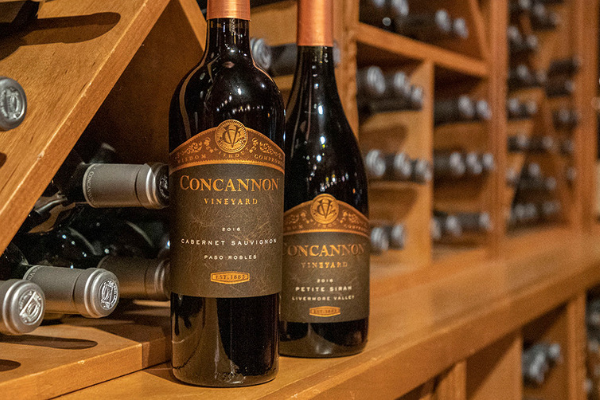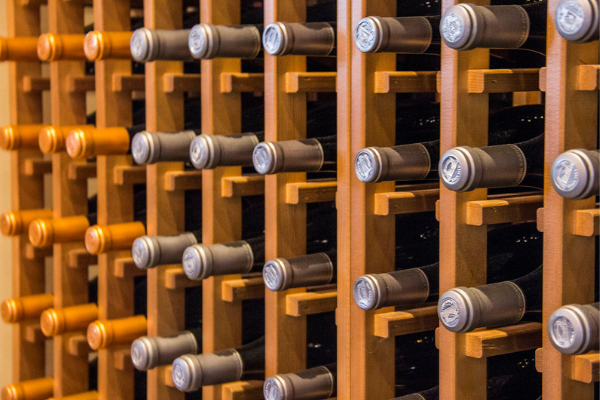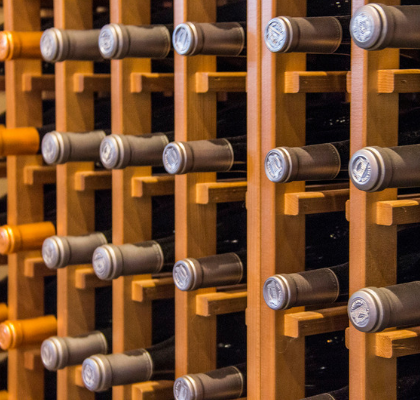Where Does your Wine Live?
When learning how to cellar wine, it is important to know the rules and tips, as well as which wines to cellar.
The truth is, if you spend a bit of time learning how to cellar wine now, you can gain the rewards at a later date by being able to drink better wines in the future. They’ll also come at a fraction of the cost you’d pay for mature wines. Anyone who enjoys wine will benefit from having his or her own wine cellar. They needn’t be the preserve of the very wealthy or the ‘wine snob’, and starting one doesn’t have to be expensive or difficult. Whether you’re a novice or a master, cellaring is all about buying wine while it’s young so you can drink it at its peak.

5 Wine Cellar Storage Rules
-
Stable temperature between 53°-57°
Temperature fluctuations denature your wines. In particular, temperatures above 77° will ruin wine within a couple of weeks and create “spoiled fruit” flavors.
-
Humidity above 50%
Levels lower than this cause corks to dry out and shrink, allowing damaging air into the wine, creating oxidation and off-odors.
-
Dark storage area
All light should be avoided, but UV light in particular: it creates hydrogen sulfide compounds in wine and affects the tannins and the color of your wine.
-
No vibrations
Imperceptible vibrations prematurely deteriorate wine by speeding up chemical reactions and aging.
-
Airflow
Lack of appropriate ventilation and air change makes wine cellars become stale and moldy. Unfortunately, most homes do not come complete with underground caves perfectly suited to the long-term storage and aging of wine. This does not, however, mean that your own cellar is out of reach. A cellar can be anything from a few bottles tucked into a cupboard in a cool and dark corner of the house to a large custom-built, temperature-controlled space.

Top Tips for Cellaring Wine
Consider these top cellaring tips to get you started:
-
Buy more than one or two bottles
Buying six or twelve bottles of each wine and trying one every so often means you can follow it as it changes over time and perhaps discover a point at which the wine is ideal for your tastes. Retailers usually give discounts for case purchases so buying this way can work out cheaper in the long run too.
-
Plan your cellar
Keep track of the wines you are opening and enjoying regularly, and purchase wines for your cellar accordingly. That said, make sure there is a good balance of reds, whites, sparkling, and dessert wines, as well as wines that are ready to drink and ones needing more age. Even if you drink mostly one or two varieties, it is still a good idea to have a range of other wines available for guests or for if your tastes change over time.
-
Budget for something bigger than you think you’ll need
If you are building a cellar or buying a wine storage unit, always budget for something bigger than you think you’ll need. Cellars have a sneaky habit of very easily outgrowing their space.
-
Don’t save your wine….Enjoy it!
It’s much better to drink a wine a bit too young and find it still has more potential than to drink one too old and find it disappointingly past its prime.
-
Open them on the early side
A cellaring recommendation on a wine label usually assumes perfect cellaring conditions, so if your cellar is less than perfect it is usually better to open them on the early side.
-
Screwcaps
Contrary to popular belief, wines sealed under screwcaps also benefit from cellaring and aging. In addition, they don’t need to be laid down for cellaring, whereas wines under cork do (to avoid the cork drying out and shrinking).
-
Keep your eyes on the temperature
If you store your wine in an area where temperatures exceed 77°, your wine can spoil within a matter of weeks. Spoiled fruit flavors will develop and off-odors will appear.
-
Don’t be fooled
Wine cabinets have nothing in common with wine fridges: cabinets do not generate intense cold and they don’t remove ambient humidity as fridges do. Wine cabinets are designed to replicate the ideal conditions found in the best natural underground wine cellars by controlling humidity, temperature, UV light and ventilation (and by limiting damaging vibrations).

What Wines to Cellar
Try to cellar a variety of wines – after all, one of the pleasures of having your own cellar is always having a suitable bottle of wine to open, whatever the food, weather, or occasion.
Wine requires a few instrumental components in order to age well; fruit, acidity and tannin (in reds) are the most important and a wine needs enough of these, and enough concentration, to go the distance.
Wines to Cellar (Generally Good Cellaring Wines)
-
Cabernet Sauvignon
-
Merlot
-
Syrah
-
Pinot Noir
-
Chardonnay
Wines to Enjoy Young (Generally Best Enjoyed Young)
-
Grenache
-
Pinot Gris
-
Viognier
-
Sauvignon Blanc
Keep Learning How to Cellar
Remember that the fun isn’t just purchasing the wine, but everything leading up to enjoying your first glass. Do the research, read reviews and books, taste, talk, and ask questions. When you do end up pouring that magical first glass from your newly created collection, you’ll enjoy it all the more—whether it’s a $10 Chardonnay or a big California Cabernet Sauvignon—because you put the time and effort into finding it.
LK
LeeAnn Kaufman
CMSA Sommelier
Concannon Estate



